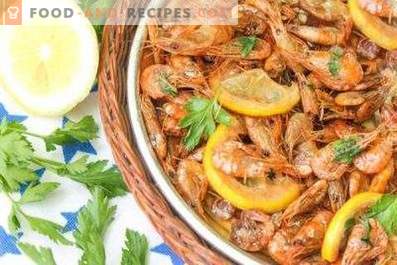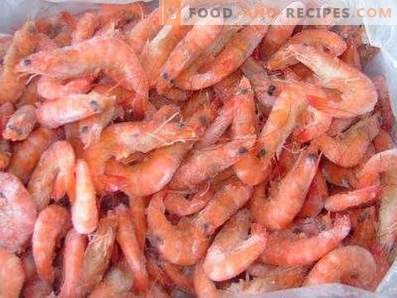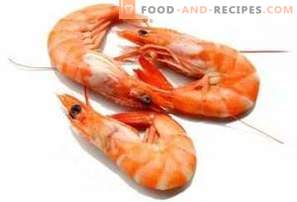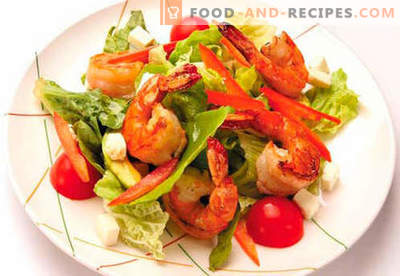
You do not like shrimp? Yes, you just do not know how to cook them! In practice, by the way, it turns out that just the shrimps themselves are many and love and will not refuse to eat them, but the process of cleaning them discourages the whole hunt. And well, if we are talking about friendly or family gatherings for shrimp and beer, in such cases, you can not rush and somehow, let them slowly clean one by one. No wonder that shrimps are compared with seeds - while you clean them, while you put them in your mouth, while you eat them - the whole process and ritual. But what if you need to shrimp on a salad? And time just barely enough? What to do then? You should not give up the idea, the more quickly you can clean the shrimp in the pre-New Year's job, when every minute counts.
Basic rules for shrimp cleaning
First of all, you need to know that shrimp, which are already ready to eat, is being cleaned, and no (mostly) manipulations are done with peeled ones. That is, if you want to boil shrimps, fry or something else to do with them - do it while they are in the shell. Peeled shrimps can be filled with oil, vinegar, mayonnaise, lemon, they can be pickled, added to soufflé, chopped. But frying and boiling is not recommended, as in this case their meat will become very dry and tough. And, by the way, most of the shrimp that are sold today in supermarkets and fish stores are already boiled. They passed this stage before freezing. That is, you no longer need to boil the shrimp for a long time, it will only harm her. It is enough just to defrost them and, if desired, pour boiling water for a few minutes. If you are so restless, then boil the sea reptiles with salt for 5-7 minutes, but no more, otherwise you will get dry boiled protein. In raw form, only large marine arthropods are supplied, and their condition is best clarified by reading the information on the price tag.
Just decide for what purposes you need shrimp. For salads, appetizers and many other dishes, shrimp is cleaned entirely from the shell. But in some cases, when using shrimp decorate dishes or they are served in such a way that they are not mixed with other products, the tips of the tail and the head are left to shrimp. The head remains for beauty, and the antennae on it and the tail itself are an indicator of the quality of the shrimp. An old, heavily frozen prawn has an antennae and tail broken off, and a fresh, non-frozen shrimp antennae will have long, flexible and very thin ends. So if you have a goal to emphasize the quality of seafood served - do not clean them completely. The removed shell makes it possible to remove the head with one movement, take the shrimp by the tail and eat it with appetite. To remove the shell and at the same time leave the head and tail in place, you need to take an undigested, dense shrimp by the head, pick up a scale at the base of the long shell and lift it up. The shell should open up below. If this does not work out, then go the other way. Open the shell from the bottom, between the legs. Just take the shrimp with both hands, back of yourself. With two thumbs, gently push the armor to the side, first grasping the middle with a fingernail, and then carefully remove it. If the paws remain, remove them. Often when cleaning shrimp caviar can be found. If you have to clean a lot of shrimp, then you can collect it, and then use it to decorate dishes, such as rolls or sushi.
To clear the shrimp completely, both from the shell, and from the head, and from the tail, it is enough to tear off its head, as if breaking the shrimp in half, and then pick up the shell and unfold it as a wrapper with candy. Sometimes it is enough to pull the meat inside and it comes out of the shell like a shell.























